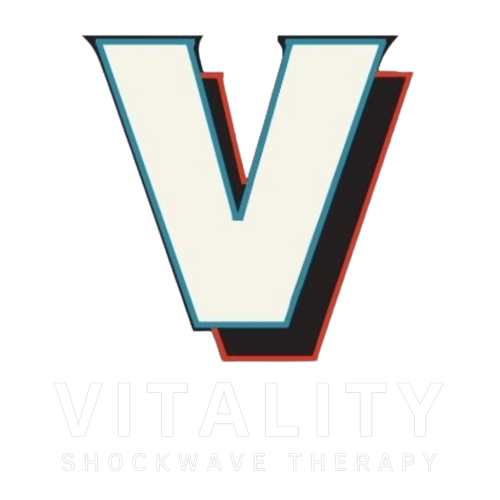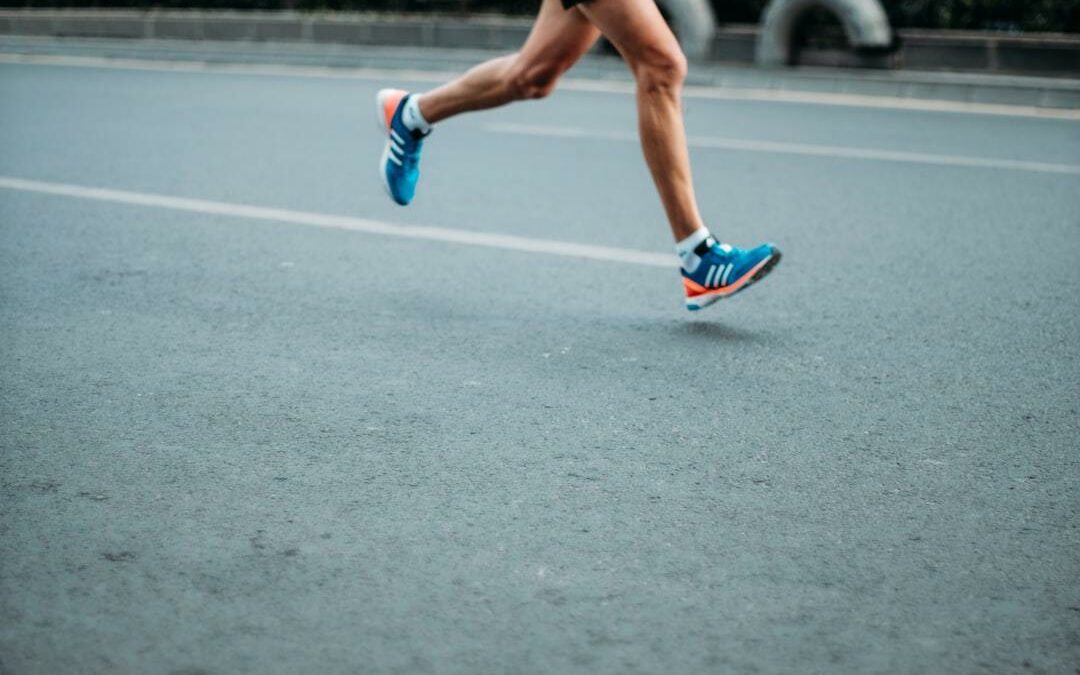Shockwave Therapy for Running Recovery is a game changer.
As an athlete or fitness enthusiast, you’re no stranger to the occasional running injury. No matter the cause, running injuries can interfere with your athletic ambitions.
Enter Extracorporeal Shockwave Therapy (ESWT), a noninvasive treatment option that has been gaining traction in the world of sports medicine and rehabilitation. In this blog post, we’ll dive deep into the science behind ESWT, including its FDA approval for plantar fasciopathy and Dr. Finnoff’s clinical experience at Mayo Clinic.
You’ll learn about the benefits of shockwave therapy for running injuries such as reduced pain and inflammation as well as increased blood flow in affected areas. We will also discuss who can benefit from ESWT treatments by avoiding invasive procedures while stimulating the natural healing process.
Curious about what to expect during an ESWT session? We’ve got you covered! Finally, we’ll explore how gradual return to activity after treatment with focused shockwave therapy can improve running capacity and pain within just four weeks – making Shockwave Therapy for Running Recovery an essential tool in every athlete’s arsenal!
Table of Contents:
- The Science Behind Shockwave Therapy
- Benefits of Shockwave Therapy for Running Injuries
- What to Expect During Shockwave Therapy
- Gradual Return to Activity After Shockwave Therapy Treatment
- ESWT for In-Season Athletes: Accelerating Return to Play
- Conclusion
The Science Behind Shockwave Therapy
Let’s talk science, shall we?
Shockwave therapy is a noninvasive treatment that has been gaining popularity in the world of musculoskeletal pain management. It’s also known as Extracorporeal Shockwave Therapy (ESWT).
Clinical experience shows it to be an effective treatment option for chronic tendinopathy and other soft tissue injuries. But how does it work?
The magic lies in compressed air. This air accelerates a projectile, creating energy that converts into acoustic pressure waves. The result? Waves penetrating up to 6 cm deep into your tissues, promoting healing by increasing blood flow and reducing inflammation.
FDA Approval for Plantar Fasciopathy
You’ll be glad to know that shockwave therapy has received FDA approval for treating plantar fasciopathy – a common running injury affecting the heel and arch of the foot.
A Mayo Clinic Expert’s Take on Shockwave Therapy
Intrigued by what experts have to say about this therapy? Dr. Jay Smith, a sports medicine physician at the Mayo Clinic, uses shockwave therapy as part of his treatment protocols for various musculoskeletal conditions.
With such a strong endorsement, it’s no wonder shockwave therapy is becoming an increasingly popular treatment option for athletes.
Benefits of Shockwave Therapy for Running Injuries
Alright, let’s dive into the good stuff.
Before we explore how shockwave therapy can work wonders on your running injuries, it’s essential to understand what makes this treatment so effective.
So, without further ado, here are some key benefits:
- Reduced Pain and Inflammation:
This treatment is highly effective in providing relief from pain and inflammation, enabling a speedy recovery. This means faster healing and a quicker return to your daily activities.
- Increased Blood Flow in Affected Areas:
The acoustic pressure waves generated by extracorporeal shockwave therapy (ESWT) stimulate increased blood flow in injured soft tissues. This helps promote natural healing processes within the musculoskeletal system.
Achieving Faster Recovery Times with ESWT
For those who are active, you may be familiar with the typical running injuries such as Achilles tendinopathy, hamstring issues, shin splints or hip damage from aging. Achilles tendinopathy, hamstring tendinopathy, medial tibial stress syndrome (aka shin splints), or hip cartilage damage due to age or wear-and-tear.
Luckily for you, a study has shown that ESWT can significantly speed up recovery times, making it an ideal choice if you want to get back on track without resorting to invasive procedures or lengthy recoveries.
Enhancing Muscle Elasticity and Tone Recruitment
But wait, there’s more.
Besides helping you heal faster from injuries, shockwave therapy has also been shown to increase muscle elasticity and muscular tone recruitment among healthy athletes. This means that even if you’re not injured, ESWT can still help improve your overall athletic performance.
In a nutshell, extracorporeal shockwave therapy is an excellent treatment option for those looking to bounce back from running injuries quickly while also enhancing their athletic abilities in the process. So why not give it a try?
Main Idea:
Shockwave therapy is an effective treatment for running injuries as it reduces pain and inflammation, increases blood flow in affected areas, and speeds up recovery times. It can also enhance muscle elasticity and tone recruitment among healthy athletes, making it a great option for those looking to improve their athletic performance while recovering from injuries. So why not give it a try?
Who Can Benefit from Shockwave Therapy Treatments?
If you’re suffering from acute or chronic pain conditions involving tendon and bone problems, then shockwave therapy might be the answer to your prayers.
This noninvasive treatment option is a fantastic alternative to surgery or repeated steroid injections that may cause increased tissue breakdown in the long run.
Avoiding Invasive Procedures
No one likes going under the knife. Thankfully, with shockwave therapy treatments becoming more popular for musculoskeletal system issues, patients can now avoid invasive procedures while still receiving effective relief from their pain.
Stimulating the Natural Healing Process
Mother Nature knows best. Clinical experience has shown that shockwave therapy stimulates our body’s natural healing process by increasing blood flow and reducing inflammation in injured soft tissues.
What to Expect During Shockwave Therapy
So, you’ve decided to give shockwave therapy a try. Well done on deciding to opt for this non-invasive approach to treating your musculoskeletal pain.
Let’s discuss what to anticipate during the ESWT session.
No Imaging Required: Unlike some other treatments, shockwave therapy doesn’t require imaging beforehand. However, X-rays may be recommended for diagnostic purposes.
Tailored Treatment Protocols: Each session is customized based on your personal tolerance levels. This ensures the best possible experience every time without causing unnecessary discomfort.
A Bit of Discomfort: Speaking of discomfort, it’s normal to feel some during the procedure – especially in areas with less skin and fat covering them. But don’t worry; most patients find it tolerable overall.
Note: If you’re pregnant or have certain medical conditions like tumors shockwave therapy might not be suitable for you.
Preparing For Your Appointment
- Dress comfortably – wear loose-fitting clothes that allow easy access to the treatment area.
- Maintain good hygiene – clean and dry skin helps ensure optimal contact between the applicator and your body.
- Avoid using lotions or creams on the day of treatment as they can interfere with wave transmission.
Post-Session Care
After your shockwave therapy session, you might experience some mild soreness and discomfort. No worries – this is normal and should subside within a few days.
Remember: Healing takes time. Be patient with yourself as you gradually return to activity following shockwave therapy treatment.
Main Idea:
Shockwave therapy is a noninvasive treatment option for musculoskeletal pain management. During the session, patients can expect tailored treatment protocols based on their tolerance levels and some discomfort in areas with less skin and fat covering them. After the session, patients should apply ice packs to reduce inflammation and follow any specific post-treatment instructions provided by their healthcare provider.
Gradual Return to Activity After Shockwave Therapy Treatment
So, you’ve just undergone shockwave therapy for your running injury. What’s next?
The key to a successful recovery is gradually increasing your activity level based on symptom intensity. This approach ensures minimal downtime compared to surgical intervention alternatives, making it an ideal choice for many looking for a faster return to their sport without invasive procedures or lengthy recoveries.
Focused Shockwave Therapy (F-SWT) Improving Running Capacity and Pain in Just Four Weeks
Believe it or not, F-SWT has been shown to improve running capacity and reduce pain in as little as four weeks. Clinical experience indicates that this noninvasive treatment can provide significant relief from chronic tendinopathy symptoms while also enhancing overall athletic performance.
Limited Relief After One Week with No Sustained Benefit for Jumping Athletes
While the results of extracorporeal shockwave therapy (ESWT) are promising, it’s essential to manage expectations when returning to activities involving jumping after treatment. Studies have shown that athletes may experience limited relief after one week but no sustained benefit regarding jump height or power output over time.
So, what are you waiting for? Shockwave therapy is a viable treatment option for musculoskeletal system injuries. Give it a try and get back on track to achieving your running goals.
ESWT for In-Season Athletes: Accelerating Return to Play
Hey, athletes.
Did you know that shockwave therapy is a game-changer when it comes to injury recovery?
This study shows that elite European football players tolerate shockwave therapy well and can recover from selected injuries faster.
But wait, there’s more.
Why Choose Shockwave Therapy Over Other Treatment Options?
- Faster Recovery: No need to sit on the sidelines while your teammates play. Get back in action sooner.
- Promotes Natural Healing: Stimulate your body’s own repair mechanisms instead of relying on invasive procedures or medications.
- No Surgery Required: Avoid going under the knife by choosing this noninvasive treatment option. Your future self will thank you.
How Can You Make The Most Of Shockwave Therapy For Running Recovery?
- Talk to your healthcare provider about incorporating shockwave therapy into your treatment plan.
- Follow their recommendations for post-treatment activity levels and gradually increase intensity based on symptom improvement.
- Stay consistent with follow-up appointments to monitor progress and make any necessary adjustments to your treatment protocols.
Ready to give shockwave therapy a try? Reach out to a qualified healthcare provider experienced in shockwave therapy, like those at Vitality Shockwave Therapy, and get back on track.
In the meantime, keep training smart, stay healthy, and remember: there’s always a way forward in the world of sports medicine.
Conclusion
Overall, Shockwave Therapy For Running Recovery is a promising treatment option for athletes and individuals suffering from tendinopathy. Extracorporeal shockwave therapy (ESWT) offers numerous benefits over traditional treatments such as surgery or steroid injections, including faster recovery times and improved athletic performance.
The science behind shockwave therapy is still being studied, but it appears to work by stimulating the body’s natural healing processes through the use of high-energy sound waves. This noninvasive treatment has gained popularity due to its clinical experience and effectiveness in treating various musculoskeletal system injuries.
While not suitable for everyone, those who are good candidates can expect to see improvements in their running injuries with minimal downtime post-treatment. Treatment protocols may vary depending on the severity of the injury and the individual’s response to therapy.
For athletes, entrepreneurs, high-level executives, police officers, and healthcare providers, shockwave therapy can be a game-changer in their recovery process. It is a treatment option that can help them get back to their daily routine and improve their overall quality of life.

